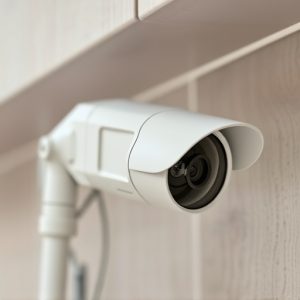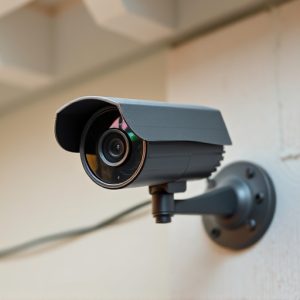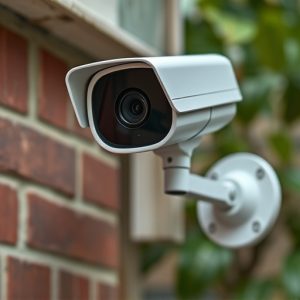Secure Dummy Cameras: Installation Guide for Enhanced Surveillance Safety
Mock surveillance systems offer safe, cost-effective testing of security measures without risking re…….
Mock surveillance systems offer safe, cost-effective testing of security measures without risking real equipment. Key benefits include secure dummy cameras that deter thieves with no valuable parts, ideal for outdoor installations. Setting up these systems requires strategic placement, robust construction, and heavy-duty securing methods to prevent theft. After installation, thorough configuration, regular testing, and integration with motion sensors enhance security and deterreal criminal activity by safeguarding dummy cameras.
“Enhance your home or business security with our comprehensive guide on mock surveillance system installation. Discover the benefits of these innovative systems, which offer a cost-effective way to deter theft and monitor areas discreetly. We’ll walk you through the process of selecting high-quality dummy cameras, step-by-step physical installation, camera configuration, and crucial security measures to protect against theft. By following this guide, you’ll create an effective, yet invisible, security network.”
- Understanding Mock Surveillance Systems and Their Benefits
- Choosing the Right Dummy Cameras for Your Setup
- Physical Installation: A Step-by-Step Guide
- Configuration and Testing of Dummy Cameras
- Securing Against Theft: Best Practices and Tips
Understanding Mock Surveillance Systems and Their Benefits
Mock surveillance systems offer a cost-effective and safe way to test security measures without compromising real equipment. They are an excellent tool for businesses, homeowners, and law enforcement agencies to assess their security setups. These systems mimic real surveillance cameras, providing all the benefits of a functional security system without the risk of actual footage being exposed or sensitive components being stolen.
One significant advantage is the ability to install secure dummy cameras against theft. Mock surveillance devices are designed to deter potential thieves as they look identical to genuine cameras but contain no valuable internal components. This makes them an ideal solution for outdoor installations, ensuring peace of mind and preventing unauthorized access while keeping costs low compared to purchasing and maintaining real security equipment.
Choosing the Right Dummy Cameras for Your Setup
When selecting dummy cameras for your mock surveillance system, it’s crucial to consider your specific setup and security needs. Look for secure dummy cameras designed to withstand outdoor conditions and potential tampering. These models often feature robust construction with weatherproof housings and motion-activated alerts, ensuring they remain in place during testing or training exercises.
To enhance realism and prevent theft, choose cameras with realistic designs that mimic real surveillance equipment. Many options are available with LED indicators, adjustable mounting brackets, and even infrared capabilities for nighttime simulation. Securing these dummy cameras properly is essential; consider using heavy-duty mounts and locking mechanisms to deter would-be thieves, ensuring your system remains intact during the entire installation process.
Physical Installation: A Step-by-Step Guide
Physical Installation: A Step-by-Step Guide
Begin by carefully selecting a strategic location for each dummy camera, ensuring optimal visibility and coverage while keeping them out of plain sight to avoid tampering or theft. Use sturdy mounting hardware suitable for the weight and size of your chosen cameras. Securely attach each camera to its designated mount, double-checking all bolts and connections for stability.
Next, connect the cameras to a power source using the provided cables. Route these wires neatly and discreetly to prevent tripping hazards or unsightly entanglements. Install the control panel at a central location, ensuring easy access for monitoring and managing the system. Configure the system settings according to your preferences, including camera views, alerts, and recording options. Regularly test the system’s functionality to ensure all cameras are operational and securely connected.
Configuration and Testing of Dummy Cameras
After installing your dummy cameras, it’s crucial to configure and test them thoroughly for optimal security. Start by ensuring each camera is connected to your network and accessible via a stable internet connection. Adjust settings like resolution, frame rate, and field of view to match your actual surveillance needs. This step is vital to guarantee you’ll receive clear and detailed footage from every angle.
Once configured, test the dummy cameras’ functionality in various scenarios. Check for smooth video streaming, proper motion detection, and reliable alerts. Additionally, verify that the cameras are secure against potential theft by securing them in sturdy mounts or enclosures. This prevents tampering and ensures they remain in place, maintaining the integrity of your mock surveillance system.
Securing Against Theft: Best Practices and Tips
To secure dummy cameras against theft, start by placing them in well-lit areas where it’s easier to spot any suspicious activity. Mounting them high up or in hard-to-reach locations can deter potential thieves. Additionally, use heavy-duty screws and brackets that can withstand forced entry attempts. Covering the camera with a decoy case or disguising it as another object can make it less obvious and reduce the risk of theft.
Regularly check for any signs of tampering and ensure all connections are secure. Consider adding motion sensors or alarms to alert you if someone tries to remove or damage the cameras. Keeping a close eye on your dummy surveillance system will not only protect against theft but also enhance its overall effectiveness in deterring actual criminal activity.
Installing a mock surveillance system is a practical way to enhance security while offering peace of mind. By choosing the right dummy cameras and securing them properly, you can create an effective deterrent against potential theft. Following the step-by-step guide provided, from physical installation to configuration, ensures your system functions seamlessly. Remember, the key to success lies in combining quality equipment with robust security measures, such as those outlined in this article, to maintain a safe and secure environment.


